American Boogeyman: The Disturbing Case Of Cannibalistic Serial Killer Albert Fish
Albert Hamilton Fish (1870 – 1936) was an American sado-masochistic serial killer and cannibal. He was also known as the Gray Man, the Werewolf of Wysteria, and possibly the Brooklyn Vampire. He boasted that he had 'had children in every State,' putting the figure at around 100, although it is not clear whether he was talking about molestation or cannibalization, less still as to whether it was true or not.
Albert Hamilton Fish was a suspect in at least five killings over his lifetime.

Fish confessed to three murders that police were able to trace to a known homicide, and confessed to stabbing at least two other people.
'I always had a desire to inflict pain on others and to have others inflict pain on me. I always seemed to enjoy everything that hurt.'
Early life.
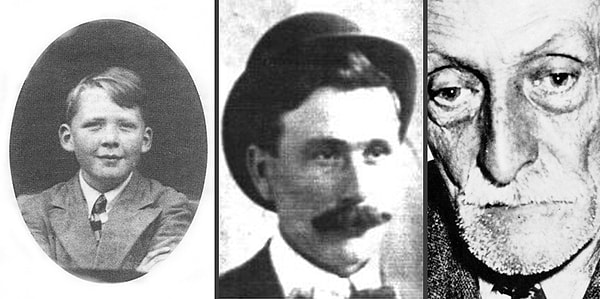
He was born as Hamilton Fish in Washington, D.C., to Randall Fish (1795-1875). His father was 43 years older than his mother. Fish was the youngest child and he had three living siblings: Walter, Annie, and Edwin Fish. He wished to be called 'Albert' after a dead sibling, and to escape the nickname 'Ham and Eggs' that he was given at an orphanage in which he spent many of his early years.
His father died of a heart attack when Fish was 5, his mother put him in an orphanage. He was frequently whipped and beaten there, and eventually discovered that he enjoyed physical pain. The beatings would often give him erections, for which the other orphans teased him.
By 1879, his mother got a government job and was able to look after him. However, his various experiences before this had affected him. He started a homosexual relationship in 1882, at the age of 12, with a telegraph boy. The youth also introduced Fish to such practices as drinking urine and coprophagia. Fish began visiting public baths where he could watch boys undress, and spent a great portion of his weekends on these visits.
By 1890, Fish had arrived in New York City, and he said he became a male prostitute.
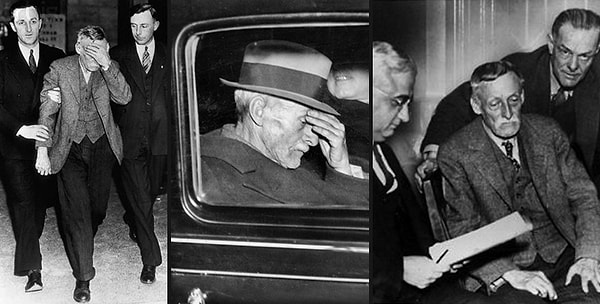
He also said he began raping young boys, a crime he kept committing even after his mother arranged a marriage. In 1898, he was married to a woman nine years his junior. They had six children: Albert, Anna, Gertrude, Eugene, John, and Henry Fish. He was arrested for embezzlement and was sentenced to incarceration in Sing Sing in 1903. He regularly had sex with men while in prison.
Throughout 1898 he worked as a house painter, and he said he continued molesting children, mostly boys under six. He later recounted an incident in which a male lover took him to a waxworks museum, where Fish was fascinated by a bisection of a penis; soon after, he developed a morbid interest in castration. During a relationship with a mentally retarded man, Fish attempted to castrate him after tying him up. The man became frightened and fled. Fish then began intensifying his visits to brothels where he could be whipped and beaten more often.
Early attacks and indulgence in self harm.
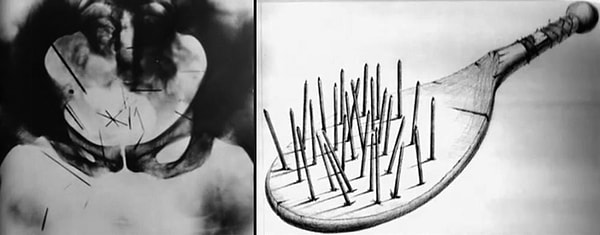
Around 1910, while he was working in Wilmington, Delaware, Fish met a 19-year-old man named Thomas Kedden. He took Kedden to where he was staying, and the two began a sadomasochistic relationship. After ten days, Fish took Kedden to 'an old farm house,' where he began to torture him. The torture took place over two weeks. Fish eventually tied Kedden up and cut off half of his penis. 'I shall never forget his scream or the look he gave me,' Fish later recalled. He originally intended to kill Kedden, cut up his body, and take it home, but he feared the hot weather would draw attention to him; instead, Fish poured peroxide over the wound, wrapped it in a Vaseline-covered handkerchief, left a $10 bill, kissed Kedden goodbye, and left. 'Took the first train I could get back home. Never heard what become of him, or tried to find out,' Fish said.
In January 1917, his wife left him for John Straube, a handyman who boarded with the Fish family. Following this rejection, Fish began to hear voices; for example, he once wrapped himself up in a carpet, explaining that he was following the instructions of John the Apostle.
It was about this time that Fish began to indulge in self-harm. He would embed needles into his groin and abdomen. After his arrest, x-rays revealed that Fish had at least 29 needles lodged in his pelvic region. He also hit himself repeatedly with a nail-studded paddle and inserted wool doused with lighter fluid into his anus and set it alight. While he was never thought to have physically attacked or abused his children, he did encourage them and their friends to paddle his buttocks with the same nail-studded paddle he used to abuse himself. He soon developed a growing obsession with cannibalism, often preparing himself a dinner consisting solely of raw meat and sometimes serving it to his children.
First attacks on children: Torture, Mutilation and Murder.
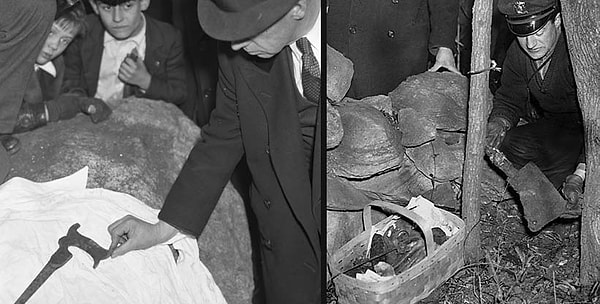
Fish committed what may have been his first attack on a child named Thomas Bedden, in Wilmington, Delaware in 1910. Afterward, he stabbed a mentally retarded boy around 1919 in Georgetown, Washington, D.C. Consistently, many of his intended victims would be either mentally retarded or African-American, because, he believed, they would not be missed. Fish tortured, mutilated, and murdered young children with his 'implements of Hell': a meat cleaver, a butcher knife, and a small handsaw.
On July 11, 1924, Fish found eight-year-old Beatrice Kiel playing alone on her parents' Staten Island farm. He offered her money to come and help him look for rhubarb. She was about to leave the farm when her mother chased Fish away. Fish left but returned later to the Kiel's barn, where he tried to sleep but was discovered by Hans Kiel and forced to leave. During 1924, the 54-year-old Fish, suffering from psychosis, felt that God was commanding him to torture and sexually mutilate children.
Shortly before the abduction of Grace Budd, Fish attempted to test his 'implements of Hell' on a child he had been molesting named Cyril Quinn. Quinn and his friend were playing box ball on a sidewalk when Fish asked them if they had eaten lunch. When they said that they had not, he invited them into his apartment for sandwiches. While the two boys were wrestling on Fish's bed, they dislodged his mattress; underneath was a knife, a small handsaw, and a meat cleaver. They became frightened and ran out of the apartment.
Fish remarried on February 6, 1930, in Waterloo, New York, to Estella Wilcox but divorced after only one week. Fish was arrested in May 1930 for 'sending an obscene letter to a woman who answered an advertisement for a maid.' Following that arrest and one in 1931, he was sent to the Bellevue psychiatric hospital for observation
Murder of Grace Budd.
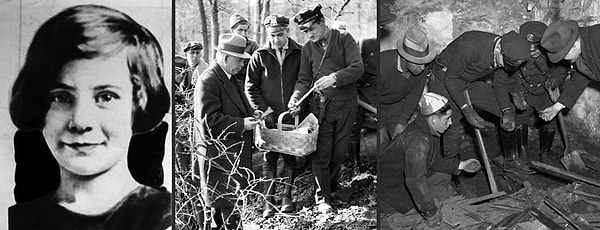
On May 25, 1928, Edward Budd put a classified ad in the Sunday edition of the New York World that read: 'Young man, 18, wishes position in the country. Edward Budd, 406 West 15th Street.' On May 28, 1928, Fish, then 58-years-old, visited the Budd family in Manhattan, New York City under the pretense of hiring Edward. He introduced himself as Frank Howard, a farmer from Farmingdale, New York. When he arrived, Fish met Budd's younger sister, 10-year-old Grace. Fish promised to hire Budd and said he would send for him in a few days. On his second visit, he agreed to hire Budd, then convinced the parents, Delia Flanagan and Albert Budd I, to let Grace accompany him to a birthday party that evening at his sister's home. Albert senior was a porter for the Equitable Life Assurance Society. Grace had a sister, Beatrice; and two other brothers, Albert Budd II; and George Budd. Fish left with Grace that day but never came back.
The police arrested Charles Edward Pope on September 5, 1930, as a suspect in the kidnapping. He was a 66-year-old apartment house superintendent, and he was accused by his estranged wife. He spent 108 days in jail between his arrest and trial on December 22, 1930.
Anonymous letter to Grace's mother.
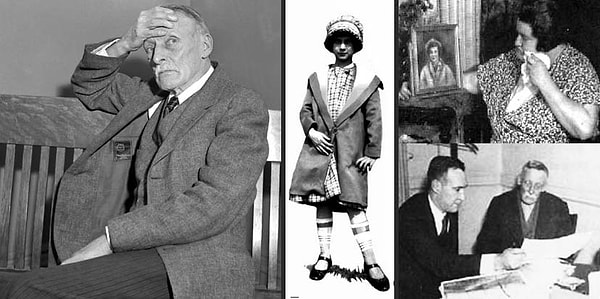
Seven years later, in November 1934, an anonymous letter was sent to the girl's parents which led the police to Albert Fish. The letter is quoted here, with all of Fish's misspellings and grammatical errors:
'Dear Mrs. Budd. In 1894 a friend of mine shipped as a deck hand on the Steamer Tacoma, Capt. John Davis. They sailed from San Francisco for Hong Kong, China. On arriving there he and two others went ashore and got drunk. When they returned the boat was gone. At that time there was famine in China. Meat of any kind was from $1-3 per pound. So great was the suffering among the very poor that all children under 12 were sold for food in order to keep others from starving. A boy or girl under 14 was not safe in the street. You could go in any shop and ask for steak—chops—or stew meat. Part of the naked body of a boy or girl would be brought out and just what you wanted cut from it. A boy or girl's behind which is the sweetest part of the body and sold as veal cutlet brought the highest price. John staid [sic] there so long he acquired a taste for human flesh. On his return to N.Y. he stole two boys, one 7 and one 11. Took them to his home stripped them naked tied them in a closet. Then burned everything they had on. Several times every day and night he spanked them — tortured them — to make their meat good and tender. First he killed the 11 year old boy, because he had the fattest ass and of course the most meat on it. Every part of his body was cooked and eaten except the head—bones and guts. He was roasted in the oven (all of his ass), boiled, broiled, fried and stewed. The little boy was next, went the same way. At that time, I was living at 409 E 100 St. near—right side. He told me so often how good human flesh was I made up my mind to taste it.
On Sunday June the 3, 1928 I called on you at 406 W 15 St. Brought you pot cheese—strawberries. We had lunch. Grace sat in my lap and kissed me. I made up my mind to eat her. On the pretense of taking her to a party. You said yes she could go. I took her to an empty house in Westchester I had already picked out. When we got there, I told her to remain outside. She picked wildflowers. I went upstairs and stripped all my clothes off. I knew if I did not I would get her blood on them. When all was ready I went to the window and called her. Then I hid in a closet until she was in the room. When she saw me all naked she began to cry and tried to run down the stairs. I grabbed her and she said she would tell her mamma. First I stripped her naked. How she did kick — bite and scratch. I choked her to death, then cut her in small pieces so I could take my meat to my rooms. Cook and eat it. How sweet and tender her little ass was roasted in the oven. It took me 9 days to eat her entire body. I did not fuck her tho I could of had I wished. She died a virgin.'
Mrs. Budd was illiterate and could not read the letter herself, so she had her son read it instead. Fish later admitted to his attorney that he did indeed rape Grace. Fish was a compulsive liar, however, so this may be untrue. He had told the police when asked, that it 'never even entered his head' to rape the girl.
Murder of Francis McDonnell.
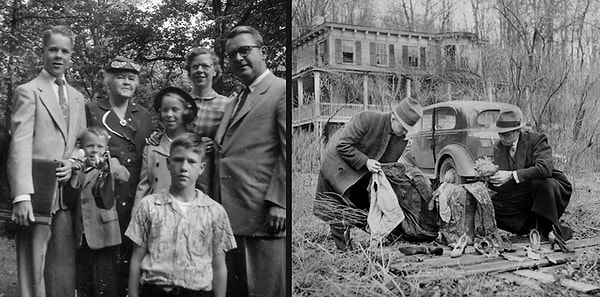
During the night of July 14, 1924, 9-year-old Francis McDonnell was reported missing by his parents. A search was organized and his body was found—hanging by a tree—in a wooded area near his home. He had been sexually assaulted, then strangled with his suspenders. According to an autopsy, McDonnell had also suffered extensive lacerations to his legs and abdomen, and his left hamstring had almost entirely been stripped of its flesh. Fish refused to claim responsibility for this, although he later stated that he intended to castrate the boy but fled when he heard someone approaching the area.
McDonnell's friends told the police that he was taken by an elderly man with a gray mustache. Francis' mother, Anna McDonnell, said she saw the same man earlier that day. She told the reporters, 'He came shuffling down the street mumbling to himself and making queer motions with his hands ... I saw his thick gray hair and his drooping gray mustache. Everything about him seemed faded and gray.' This description resulted in the mysterious stranger becoming known as 'The Gray Man.'
The McDonnell murder remained unsolved until the murder of Grace Budd. It was only in March 1935, after the conclusion of his trial for the Budd murder and his confession to the killing of Billy Gaffney, that Fish confirmed to investigators that he also raped and murdered Francis McDonnell. When the McDonnell confession was made public, the New York Daily Mirror wrote that the disclosure solidified Fish's reputation as, 'the most vicious child-slayer in criminal history.'
"The bogeyman took Billy."
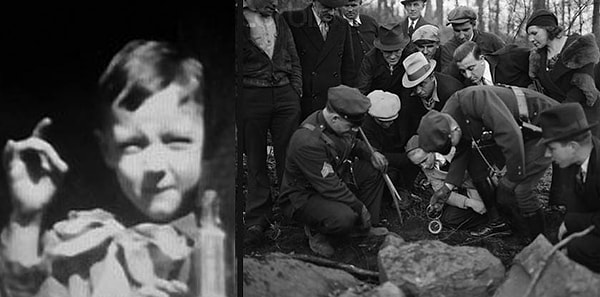
On February 11, 1927, 3-year-old Billy Beaton and his 12-year-old brother were playing in the apartment hallway in Brooklyn with 4-year-old Billy Gaffney. When the 12-year-old left for his apartment, both younger boys disappeared; Beaton was found later on the roof of the apartments. When asked what happened to Gaffney, Beaton said, 'the bogeyman took him.' Gaffney's body was never recovered. Initially, serial killer Peter Kudzinowski was a suspect in the boy's murder. Then, Joseph Meehan, a motorman on a Brooklyn trolley, saw a picture of Fish in a newspaper and identified him as the old man whom he saw February 11, 1927; the old man had been trying to quiet a little boy sitting with him on the trolley. The boy was not wearing a jacket, was crying for his mother, and was dragged by the man on and off the trolley. Beaton's description of the 'bogeyman' matched Fish's. Fish claimed the following in a letter to his attorney:
I brought him to the Riker Ave. dumps. There is a house that stands alone, not far from where I took him ... I took the G boy there. Stripped him naked and tied his hands and feet and gagged him with a piece of dirty rag I picked out of the dump. Then I burned his clothes. Threw his shoes in the dump. Then I walked back and took trolley to 59 St. at 2 A.M. and walked home from there. Next day about 2 P.M., I took tools, a good heavy cat-of-nine tails. Home made. Short handle. Cut one of my belts in half, slit these half in six strips about 8 in. long. I whipped his bare behind till the blood ran from his legs. I cut off his ears – nose – slit his mouth from ear to ear. Gouged out his eyes. He was dead then. I stuck the knife in his belly and held my mouth to his body and drank his blood. I picked up four old potato sacks and gathered a pile of stones. Then I cut him up. I had a grip with me. I put his nose, ears and a few slices of his belly in the grip. Then I cut him thru the middle of his body. Just below his belly button. Then thru his legs about 2 in. below his behind. I put this in my grip with a lot of paper. I cut off the head – feet – arms – hands and the legs below the knee. This I put in sacks weighed with stones, tied the ends and threw them into the pools of slimy water you will see all along the road going to North Beach. Water is 3 to 4 ft. deep. They sank at once. I came home with my meat. I had the front of his body I liked best. His monkey and pee wees and a nice little fat behind to roast in the oven and eat. I made a stew out of his ears – nose – pieces of his face and belly. I put onions, carrots, turnips, celery, salt and pepper. It was good. Then I split the cheeks of his behind open, cut off his monkey and pee wees and washed them first. I put strips of bacon on each cheek of his behind and put in the oven. Then I picked 4 onions and when meat had roasted about 1/4 hr., I poured about a pint of water over it for gravy and put in the onions. At frequent intervals I basted his behind with a wooden spoon. So the meat would be nice and juicy. In about 2 hr., it was nice and brown, cooked thru. I never ate any roast turkey that tasted half as good as his sweet fat little behind did. I ate every bit of the meat in about four days. His little monkey was as sweet as a nut, but his pee-wees I could not chew. Threw them in the toilet.
Elizabeth Gaffney visited Fish in Sing Sing, accompanied by Detective King and two other men. She wanted to ask him about her son's death, but Fish refused to speak to her. Fish began to weep and asked to be left alone. After two hours of asking him questions through his lawyer, James Dempsey, Mrs. Gaffney gave up. She was still unconvinced that Albert Fish was her son's killer.
Capture
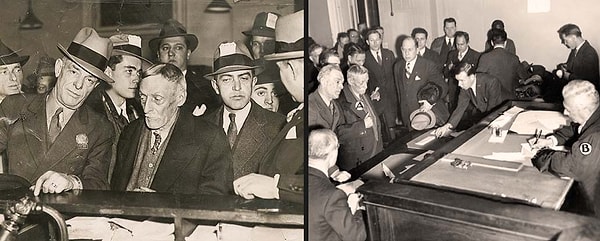
The letter Fish wrote to Grace Budd's mother was delivered in an envelope that had a small hexagonal emblem with the letters 'N.Y.P.C.B.A.' standing for 'New York Private Chauffeur's Benevolent Association.' A janitor at the company told police he had taken some of the stationery home but left it at his rooming house at 200 East 52nd Street when he moved out. The landlady of the rooming house said that Fish had checked out of that room a few days earlier. She said that Fish's son sent him money and he had asked her to hold his next check for him. William F. King, the lead investigator, waited outside the room until Fish returned. He agreed to go to the headquarters for questioning, but at the street, door lunged at King with a razor in each hand. King disarmed Fish and took him to police headquarters. Fish made no attempt to deny the Grace Budd murder, saying that he had meant to go to the house to kill Edward Budd, Grace's brother.
"What a thrill that will be if I have to die in the electric chair. It will be the supreme thrill. The only one I haven't tried."

Albert Fish's trial for the murder of Grace Budd began on March 11, 1935, in White Plains, New York.
The trial lasted for 10 days. Fish pleaded insanity and claimed to have heard voices from God telling him to kill children. Several psychiatrists testified about Fish's sexual fetishes, which included sadism, masochism, cunnilingus, anilingus, fellatio, flagellation, exhibitionism, voyeurism, piquerism, cannibalism, coprophagia, urophilia, pedophilia, and infibulation. Dempsey, in his summation, noted that Fish was a 'psychiatric phenomenon' and that nowhere in legal or medical records were there another individual who possessed so many sexual abnormalities.
None of the jurors doubted that Fish was insane, but ultimately, as one later explained, they felt he should be executed anyway. They found him to be sane and guilty, and the judge ordered the death sentence. Fish arrived at the prison in March 1935 and was executed on January 16, 1936, in the electric chair at Sing Sing. He entered the chamber at 11:06 p.m. and was pronounced dead three minutes later. He was buried in the Sing Sing Prison Cemetery. Fish is said to have helped the executioner position the electrodes on his body. His last words were reported, 'I don't even know why I'm here.' According to one witness present, it took two jolts before Fish died, creating the rumor that the apparatus was short-circuited by the needles that Fish inserted into his body. These rumors were later regarded as untrue, as Fish reportedly died in the same fashion and time frame as others in the electric chair.
At a meeting with reporters after the execution, Fish's lawyer James Dempsey revealed that he was in possession of his client's 'final statement.' This amounted to several pages of hand-written notes that Fish apparently penned in the hours just prior to his death. When pressed by the assembled journalists to reveal the document's contents, Dempsey refused, stating, 'I will never show it to anyone. It was the most filthy string of obscenities that I have ever read.'
Keşfet ile ziyaret ettiğin tüm kategorileri tek akışta gör!

Send Comment